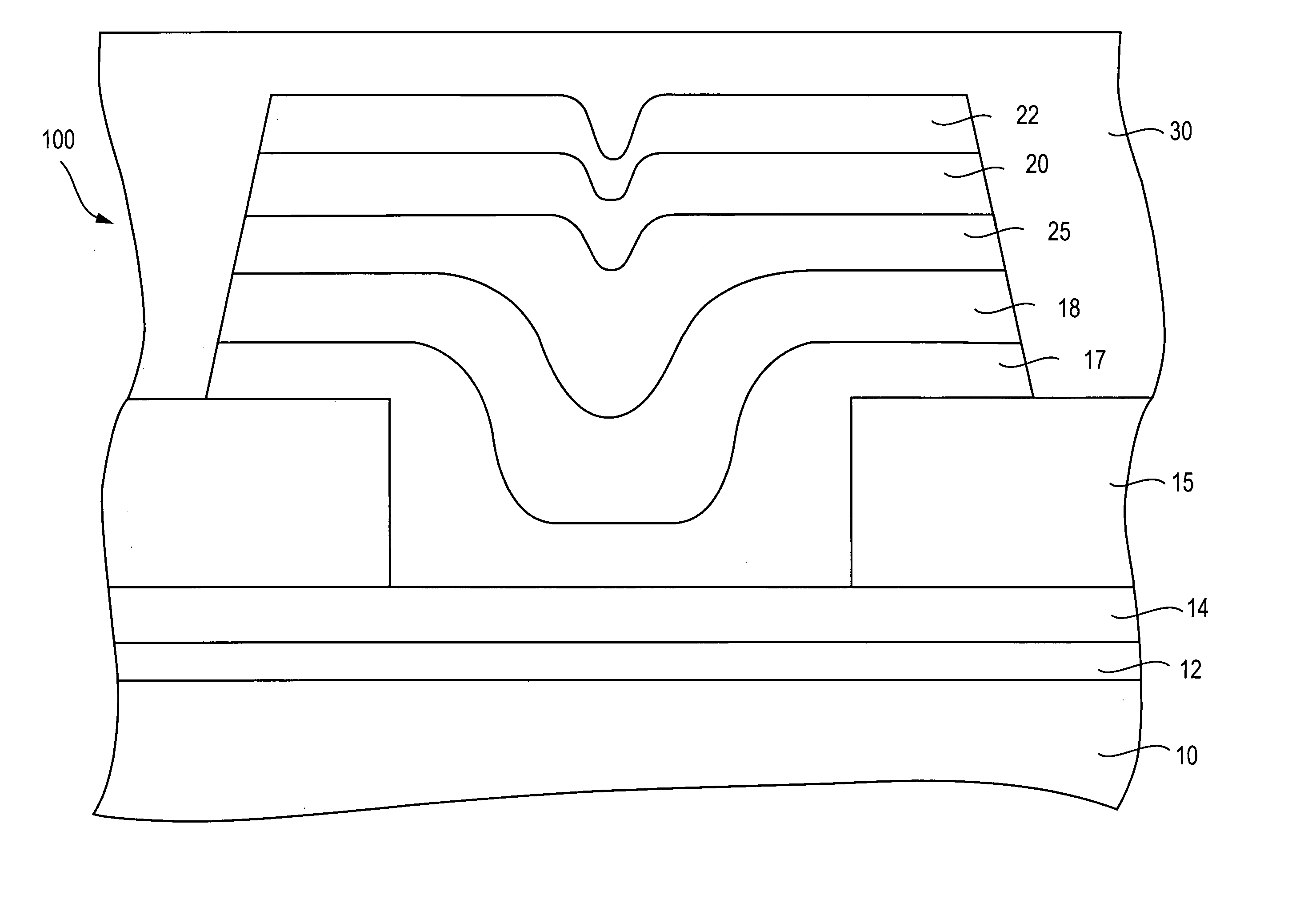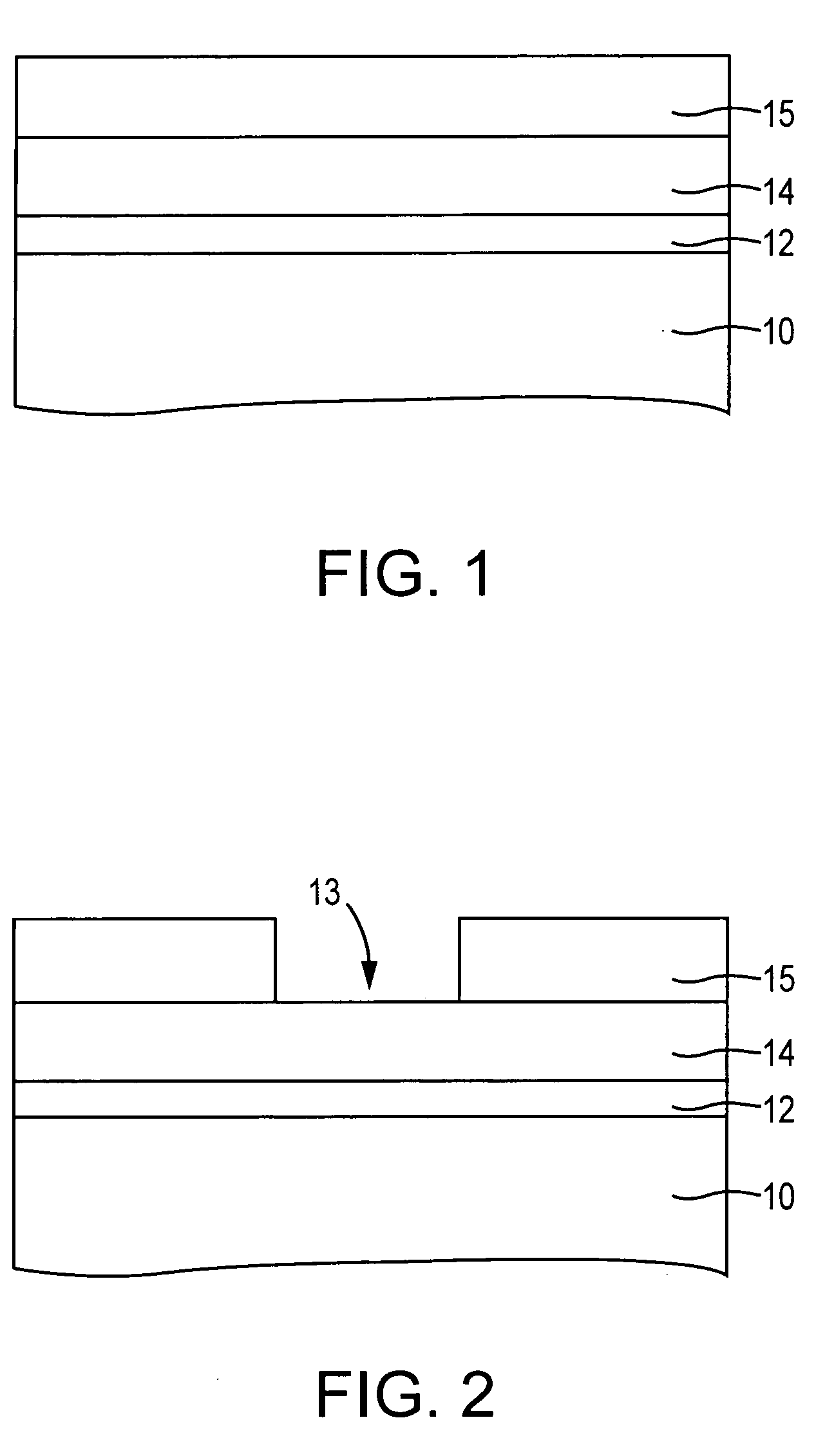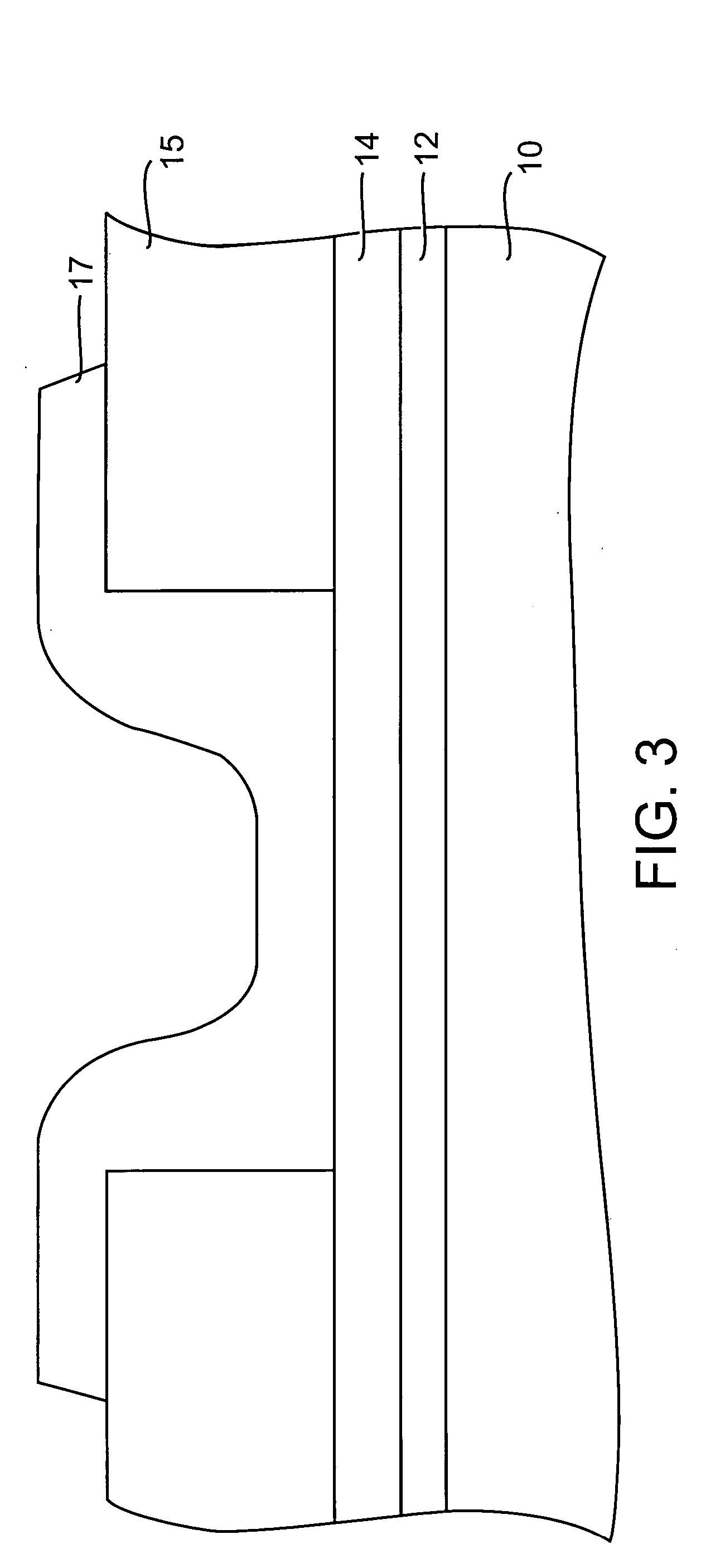Performance PCRAM cell
a ram and memory technology, applied in the direction of bulk negative resistance effect devices, semiconductor devices, electrical equipment, etc., can solve the problems of shrinking the size of each element, volatile ram devices, and loss of stored data
- Summary
- Abstract
- Description
- Claims
- Application Information
AI Technical Summary
Benefits of technology
Problems solved by technology
Method used
Image
Examples
first embodiment
[0039] According to the invention, the first chalcogenide glass layer 17 is a germanium-selenide glass having a GexSe100-x stoichiometry. The preferred stoichiometric range is between about Ge20Se80 to about Ge43Se57 and is more preferably about Ge40Se60. The first chalcogenide glass layer 17 preferably has a thickness of from about 100 Å to about 1000 Å, and more preferably has a thickness of about 150 Å.
[0040] The first chalcogenide glass layer serves as a glass backbone for allowing a metal-containing layer, such as a silver-selenide layer, to be directly deposited thereon. The use of a metal-containing layer, such as a silver-selenide layer, in contact with the chalcogenide glass layer makes it unnecessary to provide a metal (silver) doped chalcogenide glass, which would require photodoping of the substrate with ultraviolet radiation. However, it is possible to also metal (silver) dope the chalcogenide glass layer, which is in contact with the silver-selenide layer, as an option...
second embodiment
[0056] Referring now to FIG. 9, which shows the invention subsequent to the processing step shown in FIG. 4, the stack of layers formed between the first and second electrodes may include alternating layers of chalcogenide glass, a metal-containing layer such as a silver-selenide layer, and a silver layer. As shown in FIG. 9, a first chalcogenide glass layer 17 is stacked atop a first electrode 14, a first metal-containing layer 18 is stacked atop the first chalcogenide glass layer 17, a first silver layer 25 is stacked atop the first metal-containing layer 18, a second chalcogenide glass layer 117 is stacked atop the first silver layer 25, a second metal-containing layer 118 is stacked atop the second chalcogenide glass layer 117, a second silver layer 125 is stacked atop the second metal-containing layer 118, a third chalcogenide glass layer 217 is stacked atop the second silver layer 125, a third metal-containing layer 218 is stacked atop the third chalcogenide glass layer 217, a...
PUM
| Property | Measurement | Unit |
|---|---|---|
| resistance | aaaaa | aaaaa |
| composition | aaaaa | aaaaa |
| thickness | aaaaa | aaaaa |
Abstract
Description
Claims
Application Information
 Login to View More
Login to View More - R&D
- Intellectual Property
- Life Sciences
- Materials
- Tech Scout
- Unparalleled Data Quality
- Higher Quality Content
- 60% Fewer Hallucinations
Browse by: Latest US Patents, China's latest patents, Technical Efficacy Thesaurus, Application Domain, Technology Topic, Popular Technical Reports.
© 2025 PatSnap. All rights reserved.Legal|Privacy policy|Modern Slavery Act Transparency Statement|Sitemap|About US| Contact US: help@patsnap.com



